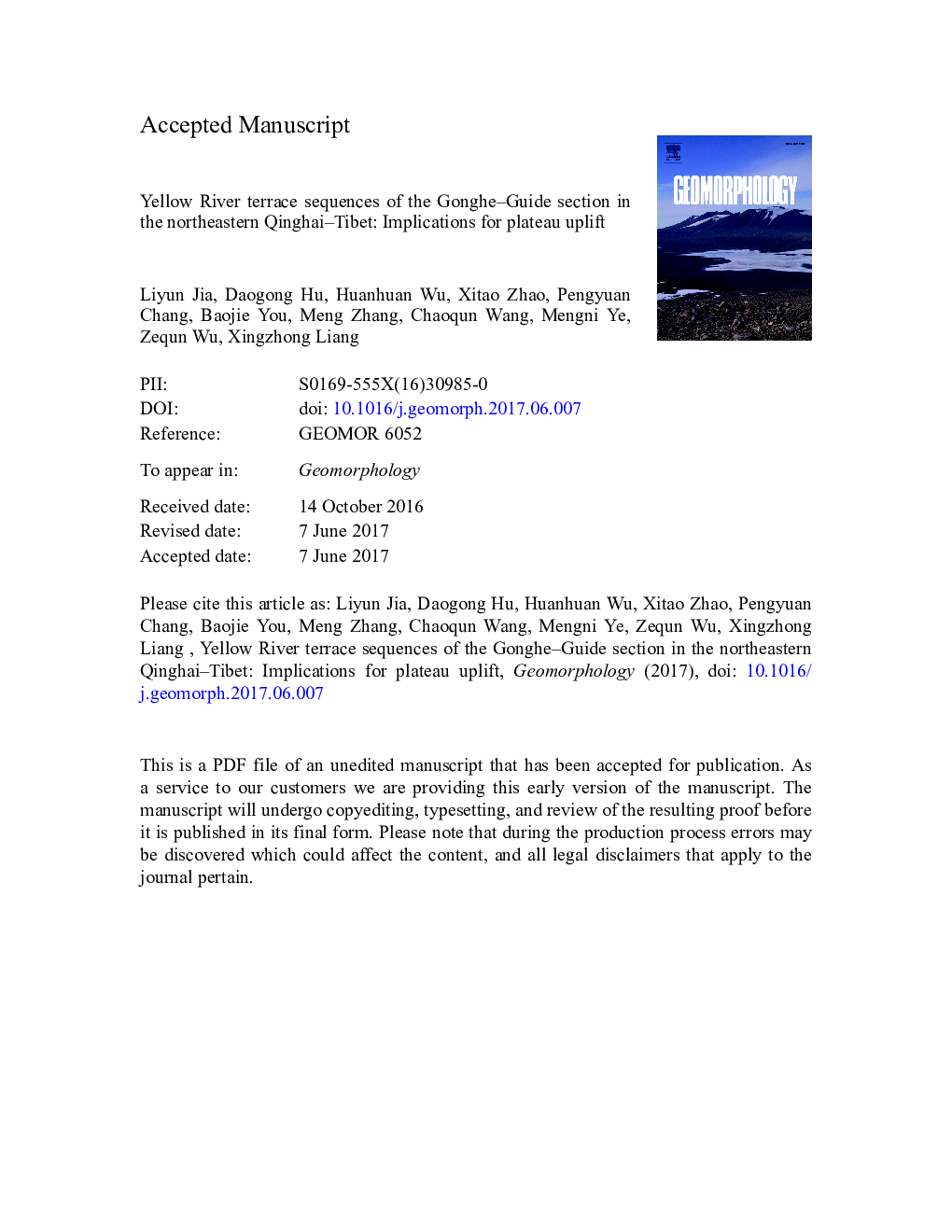| Article ID | Journal | Published Year | Pages | File Type |
|---|---|---|---|---|
| 5780759 | Geomorphology | 2017 | 53 Pages |
Abstract
The uplift of the Tibetan Plateau was a significant event in terms of global landforms and climate, but the exact nature of the uplift process remains contested among geologists. In the uplifted inland area of the plateau, river-terrace formation has been controlled mainly by tectonic uplift, which means that analyses of river terraces are an excellent means of investigating the uplift process. In this paper, we establish the terrace sequence of the Yellow River in the Gonghe-Guide section of the northeastern Tibetan Plateau, making use of field investigations, gravel analysis, and electron spin resonance (ESR) dating. Terraces T3-T9 of the numbered sequence formed at ~Â 0.13, 0.18, 0.23, 0.41, 0.85, 0.93, and 1.32Â Ma, (moving backwards in time and upwards from the valley floor), whereas terraces T11-T20 formed at ~Â 1.71, 1.75, 1.88, 1.94, 2.01, 2.12, 2.23, 2.31, 2.36, and 2.47Â Ma. This suggests that the Yellow River existed in Gonghe and Guide basins for at least the last 2.47Â Ma. The incision rates of the Yellow River in the Gonghe-Guide section indicate that there were three distinct phases of uplift of the northeastern Tibetan Plateau, occurring at different rates, with an average uplift rate of ~Â 0.26Â mm/yr during the Quaternary. These results support the multi-stage uplift model, which states that the Tibetan Plateau has experienced continuous uplift since 8Â Ma, but contradicts both the early uplift theory, which holds that the uplift of the Tibetan Plateau occurred mainly before the Pliocene, and the notion of a late and rapid uplift of the plateau that began at 3.6Â Ma.
Related Topics
Physical Sciences and Engineering
Earth and Planetary Sciences
Earth-Surface Processes
Authors
Liyun Jia, Daogong Hu, Huanhuan Wu, Xitao Zhao, Pengyuan Chang, Baojie You, Meng Zhang, Chaoqun Wang, Mengni Ye, Zequn Wu, Xingzhong Liang,
